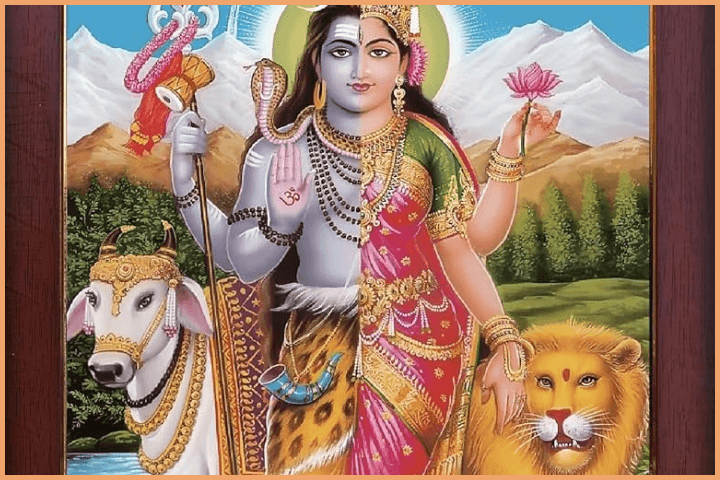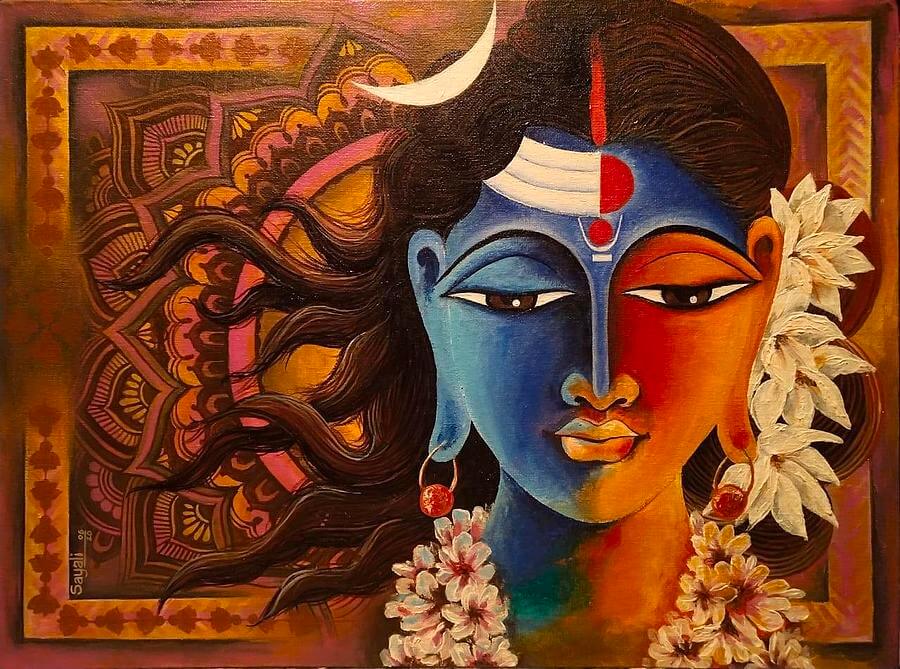Lord Ardhanarishvara, the divine philosopher, speaks about the nature of man and woman. Arthanareeswarar exists within every individual and manifests in both male and female forms. Within every individual, there exists masculinity and femininity. We will explore the importance of recognizing and understanding gender diversity in our society. So, let’s embark on this enlightening journey and explore the depths of gender identity.
The Origin of Ardhanarishvara
The concept of Ardhanarishvara has its roots in Hindu mythology, particularly in the Shiva Purana and Skanda Purana. According to the legend, Goddess Parvati desired complete unity with Lord Shiva. Despite their strong bond, she felt they remained separate entities. In her devotion, Parvati performed intense meditation, seeking to merge with Shiva. Moved by her dedication, Lord Shiva granted her wish, and together, they became Ardhanarishvara, symbolizing the union of masculine and feminine energies.
In another tale, Sage Bhringi worshipped only Lord Shiva, ignoring Goddess Parvati. Upset by this, Parvati merged with Shiva into the form of Ardhanarishvara, illustrating that Shiva and Shakti are inseparable. This divine form reveals that the cosmic balance depends on both masculine and feminine energies working together.
Another version from the Shvetashvatara Upanishad states that Shiva appeared as Ardhanarishvara to correct Brahma’s ego when he recited the Vedas incorrectly. Emerging from a column of fire, Shiva’s form as both male and female reflected the ultimate unity of all creation.
Symbolism of Ardhanarishvara
Ardhanarishvara represents the perfect balance of opposing forces, illustrating that creation cannot exist without the interplay of masculine and feminine energies. The symbolic elements of this form include:

- Left Side (Parvati/Feminine Side): Depicted with ornaments, a flowing dress, and a breast, this side symbolizes fertility, compassion, and creativity.
- Right Side (Shiva/Masculine Side): Depicted with matted hair, a serpent coiled around the neck, and a trident in hand, this side symbolizes strength, asceticism, and destruction.
- Third Eye (Trinetra): Signifying wisdom and insight.
- Mounts: Nandi, the bull, represents Shiva’s side, while Parvati’s side features a lion.
- Mudra (Hand Gesture): The right hand is often in the Abhaya Mudra (gesture of fearlessness), while the left holds a flower, symbolizing nurturing and compassion.
Philosophical Significance
The form of Ardhanarishvara carries deep philosophical meaning:
- Unity of Opposites: It reflects the inseparable nature of Purusha (male principle) and Prakriti (female principle), essential for creation and existence.
- Balance and Harmony: Shiva symbolizes the power of detachment and destruction, while Parvati represents creation and nurturing. Their union emphasizes the need for balance in life.
- Kundalini Energy: In yogic philosophy, the left side (Ida Nadi) corresponds to feminine energy, and the right side (Pingala Nadi) corresponds to masculine energy. Balancing these energies is essential for spiritual awakening.
- Advaita (Non-Duality): Ardhanarishvara teaches that the divine essence transcends gender and earthly distinctions, reinforcing that all existence is interconnected and unified.
Gender Identity and Equality
The physical body, representing female identity, holds immense complexity. Despite the common misconceptions, the inherent nature of female identity encompasses various characteristics. For instance, the aspect of fertility distinguishes the female identity, and it is the chromosomes responsible for this unique trait. On the other hand, the male identity, housed within the right side of the body, exhibits distinct masculine qualities. Understanding these dynamics is crucial, as they shape our individual experiences and interactions within the world.
However, it is important to note that gender identity extends beyond physicality. There are instances where an individual may identify with a gender that differs from their assigned sex at birth. This diversity is an integral part of our world, and it is through the teachings of the great philosopher Arthanareeswarar that we can appreciate the spiritual significance of gender identity.
In the realm of spirituality, Lord Shiva is depicted as Ardhanarishvara, the embodiment of both masculine and feminine energies. The Ardhanarishvara symbolizes the interconnectedness of male and female identities, highlighting their equal importance. Just as the left side of the body represents the feminine aspect, the right side signifies the masculine aspect. This divine symbolism emphasizes that every individual possesses a blend of masculine and feminine qualities.
In our society, it is essential to recognize and respect gender diversity. Each individual’s unique place in the world is defined by their gender identity. It is our duty to embrace and celebrate the inherent feminine and masculine qualities in all individuals. By doing so, we foster an environment of inclusivity and honor the divine design of existence.
Ardhanarishvara in Art and Culture
Ardhanarishvara has been a powerful subject in Indian art, sculpture, and literature. Iconic depictions of Ardhanarishvara can be found in several temples across India, particularly in Tamil Nadu, Karnataka, and Odisha. Notable examples include the Brihadeeswarar Temple in Tamil Nadu and the Elephanta Caves near Mumbai.
In classical Indian dance forms like Bharatanatyam and Odissi, dancers skillfully portray Ardhanarishvara by embodying both masculine and feminine traits, showcasing the beauty of balance and unity.
Conclusion
At last, gender identity is a fundamental aspect of every human being. Understanding the complexities of gender identity and recognizing the significance of gender diversity are crucial steps toward fostering a harmonious society. Let us strive to respect and celebrate the inherent feminine and masculine qualities within each individual, thereby embracing the divine design of humanity. By doing so, we can create a world that thrives on inclusivity, love, and acceptance for all.

